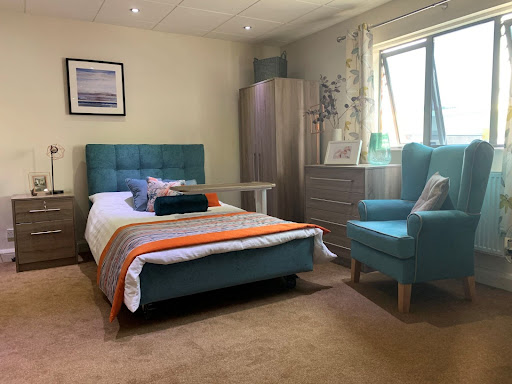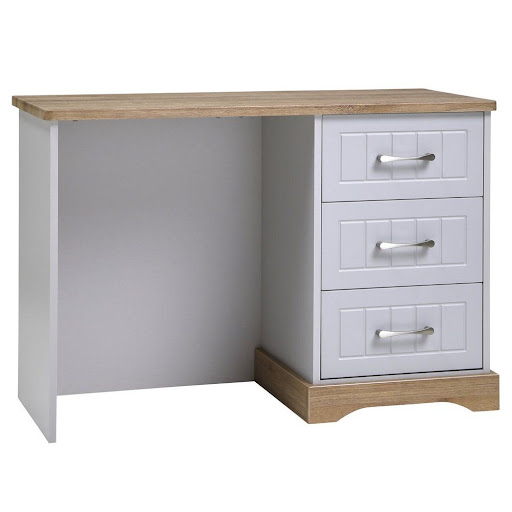Ensuring your care home residents get a good night’s sleep is essential for them to remain physically and mentally healthy.
High-quality profiling beds provide long-term assistance to those with limited mobility, the elderly, and the disabled by providing a comfortable space to relax, rest and sleep well.
Put together by the healthcare experts at Wippet, here are five of the top tips for choosing a profiling bed for your care home.
What is a profiling bed?
A profiling bed is a special section-adjustable bed that allows caregivers to quickly raise or lower specific portions of the mattress to aid the user's comfort.
For example, raising only the head supports the user in an upright position to participate in activities such as socialising and eating.
Raising just the foot supports blood circulation, washing and turning the user for proper pressure management.
Profiling care beds are used in nursing homes, the broader nursing care industry, and private homes. They provide the perfect balance between comfort for the user and practicality for their medical condition.
They are typically sold in pairs, as singles, and with or without special profiling mattresses and come in two types: manual and electric.
What types of profiling beds are there?
Before you choose the best section profiling beds for your residents, you first need to understand the types of beds available.
Manual beds
A manual profiling bed can move up to four sections of the bed independently of each other to ensure the user is kept in a suitable position.
These bed sections must be moved manually by the carer, often by using locks and levers to manoeuvre them into the correct positions.
Pros of manual profiling beds:
- Cheaper than electric
- Take up less space
- Can feel more homely
- Don't need to be near a power source
Cons of manual profiling beds:
- Not as easy or quick to set up
- Don't give the resident such a great experience
- Can provide the patient less dignity
The Elite profiling bed is an excellent example of a manual style profiling bed. This design is suitable for dementia residents with rounded head and foot ends and a visible contrasting edge on each end. In addition, the bed features vinyl wrapped ends to provide a water and odour proof cleanable surface.
Electric beds
In contrast, an electric profiling bed has all the same sections as a manual, but these are electrically controlled.
With the push of a button on a remote or control panel attached to the bed, the carer can alter the bed to the desired position.
Pros of manual profiling beds:
- Much easier to use than manual beds
- Reduces risk of injury to the bed occupant and carer
- Particularly easy to use for carers who lack strength
- More dignifed for the resident
- Allows the carer to tweak the exact positioning of each section
Cons of manual profiling beds:
- More expensive than manual beds
- May feel less homely
- Need to be near a power source
A great example of an electric bed is the Hanley Accent 4 section. This bed features four independently configurable electric sections so you can easily find a comfortable position for the user. In addition, the bed comes complete with a two-year manufacturer warranty.
5 tips for choosing a profiling bed for your care home
1. Consider who will use the bed
When selecting a profiling bed for a resident, you must choose the one that will best suit their medical needs and personal preferences.
Medical needs
When a resident suffers from a medical condition, sleeping can cause a lot of stress as they have a never-ending battle to find a comfortable sleeping position.
Profiling beds help with this by allowing the carer to tweak the sleeping position of the resident in up to four places, so choosing the right bed for the resident’s condition can significantly improve their comfort during the night.
General medical conditions: such as back issues, issues with fluid retention and breathing issues. A profiling bed helps the resident find a comfortable resting position to get to sleep.
Breathing problems: such as those with asthma or heart conditions where they may not be able to safely or comfortably lie flat on their back. A profiling bed allows them to sleep at a slight elevation, allowing them to breathe correctly and reduce any feelings of anxiety.
Nerve problems: some people may get trapped nerves if they remain in one position too long. The profiling bed can move them to a more comfortable position, and some beds now come with massaging functions to help nerve control.
Disability problems: profiling beds can help residents with poor mobility get in and out of bed more easily. Either by raising the resident into a stance where they can push themselves up or by lowering the bed closer to the ground.
Many beds also have areas to attach hoists so that the user can be manoeuvred out of bed and into a wheelchair or other mobility device.
Obesity problems: a larger person may need a specially designed profiling bed to keep them safe or a double profiling bed.
Incontinence problems: someone suffering from incontinence can pose an infection control risk if the bed they’re on isn’t easy to clean. In these cases, choose a profiling bed that isn’t made from an absorbent material or with spaces that might trap dirt and is easy to wipe clean.
Personal needs
While the medical needs must take priority when choosing a profiling bed, it’s also important to consider your resident’s personal needs.
If a resident’s personal needs aren’t met, and they don’t feel comfortable in their surroundings, that makes them much more likely to feel anxious or distressed and unlikely to get a good night’s sleep.
You should therefore see a care home resident’s bedroom as their own home and try to make it as homely as possible for them.
Many profiling beds are designed to look less medical and more like something the resident would have in their own home.
They often come with fabric side panels and plush headboards with fashionable designs that don’t look out of place on the high street.
By choosing a more homely looking profiling bed, you can make your residents feel much more comfortable when in your care.
A great example of a homely profiling bed with a designer style is the Serenity. The Serenity bed range is luxurious and designed as a perfectly functioning electric profiling bed suitable for resident needs and carer requirements, all wrapped up in a pippy oak finish that will enhance the look of your rooms and add value to your homes.
2. Consider where it’s going
When choosing a profiling bed, you must consider the layout of the bedroom you’re putting it in.
How big do you need?
Profiling beds differ significantly in size, with electric beds often being larger than manual ones due to the electrical equipment.
Make sure you measure the space the bed is to occupy before you make any purchase to ensure the one you’ve chosen will fit where you plan it to.
Do you have the correct electrical connections?
If you’re choosing an electric profiling bed, you’ll need to make sure it’s positioned near an electrical socket to power it. If a socket isn’t near, you’ll need to consider the practicalities of either:
- Having a new socket installed in a subtle location
- Running an extension cable safely within the room to the required location
- Choosing a manual profiling bed instead (only if this meets the requirements of the resident and care team)
Does the bed suit the decor?
While not the most crucial element, where possible, you should try to choose a profiling bed that fits the aesthetics of the resident’s bedroom.
A bright red fabric bed in an otherwise neutral room may feel imposing and stressful, whereas a clinical bed in an otherwise homely setting may destroy the mood.
3. What features do you need?
The wide range of profiling beds means there are many different feature options for you to choose from, which we’ve outlined below.
Some beds may offer all of these features as standards, and others may allow you to add all of them as optional extras, whereas some may only offer one or two.
So make a list of the features you need to create a shortlist of beds.
Remote control: most electric profiling beds come with a control panel attached, but more modern ones have a remote control option. These can be handy for carers to have control over the bed from anywhere in the bedroom or for the residents themselves to have control without reaching a control panel.





